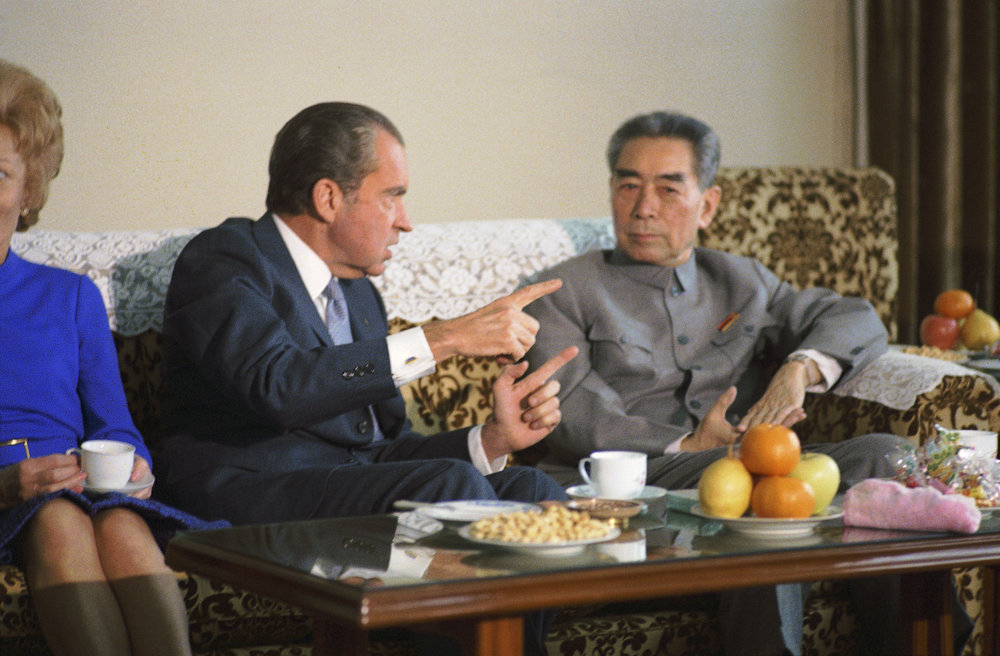Nixon’s Approach to China Policy Needs Consideration From Current Policymakers
International attitudes towards North Korea’s fifth nuclear test have revealed a deepening discord between the United States and China. While Asian leaders have urged that stronger actions be imposed upon Pyonyang, any effective policy will have to be contingent upon Chinese influence in the matter. As Richard Nixon once observed, China “is the only country that possesses the necessary leverage to rein in North Korea’s ominous nuclear weapons program.” However, the lack of consensus between China and the United States has rendered such hope pointless.
Augmenting the contentious backdrop, recent war games conducted by the Chinese and United States in the East Asian territories and the resulting contest of public words have demonstrated that efforts towards bilateral understanding between the two superpowers has waned. As a result, tensions between China, its Asian neighbors and the United States have risen, culminating in a dangerous regional arms race and a prevailing air of mistrust.
Amidst this pivotal time in Far East affairs, it would be helpful if foreign policy officials and political leaders in Washington D.C. pay close attention to President Nixon’s diplomatic calculus while he was preparing to meet with Chinese leaders on his historic visit to the People’s Republic of China in 1972.
During a stopover in Hawaii before his flight to mainland China, the president wrote in his yellow notepad:

What they want:
- Build up their world credentials.
- Taiwan
- Get U.S. out of Asia.
What we want:
- Indochina
- Communists – to restrain Chicom (Chinese Communists) expansion in Asia.
- In Future – Reduce threat of a confrontation by China Super Power.
What we both want:
- Reduce danger of confrontation and conflict.
- A more stable Asia.
- A restraint on U.S.S.R.
A close look at President Nixon’s notes displays a balanced and scrupulous approach to what Nixon believed would ease the Chinese – shut off from the world for 25 years – into a new peaceful world order. It was this way of thinking that ultimately normalized relations between the two superpowers. It also demonstrates that while certain diplomatic contexts have changed, some still remain strikingly relevant. In order to achieve a current relaxation of tensions, a Nixon-like barebones assessment for the interests of both parties needs to be developed. Let us take a look:
China has built up their world credentials since the days of 1972. 44 years since the gates to China opened, China has become a premier economic power and is now painstakingly trying to maintain its growth by means of securing energy assets abroad and pursuing aggressive monetary policies. The issue of Taiwan remains a philosophical issue, but has taken a backseat to China’s dispute with Japan over the Senkaku/Diaoyu Islands. Looking at Nixon’s third note regarding China’s wants, his intuition that China wanted United States influence out of Asia still matters significantly today and merits high-level consideration.
Comparatively, U.S. interests in China have changed. The Vietnam War has long passed and the repression of Islamic extremism has become its primary foreign policy concern. Moreover, the U.S. no longer seeks to restrain Communist expansion in Asia, but instead seeks to restrain overt Chinese influence on its Asian neighbors. However, the U.S. seems to be at odds with reducing the threat of confrontation by a Chinese superpower, having rather induced aggressive actions by the Chinese military by coupling proactive diplomacy with strategic military movements and installations.
In 1972, China shared the United States’ concern over Soviet influence, with China more wary of its aggressive neighbor. Today, as Russia and China conduct joint military exercises in the South China Sea (an annual event, but under the spotlight because of an international tribunal ruling against China’s claims in the region), it signals China’s priorities for defending against threats has shifted significantly since the days of Richard Nixon. It appears China has responded to America’s “Asia Pivot” with developing a forward deployed policy themselves.
While the U.S. and China both seek to uphold regional stability, it is evident that they have not come to an agreement as to how this would be achieved cooperatively. Due to this lack of consensus, the danger of confrontation and conflict looms.
The former president wrote in his final book, Beyond Peace:
“Many who are inexperienced about China fail to understand that one of the keys to its history in this century has been the restoration of national pride and unity after generations of fractionalism and foreign exploitation. Their pride is neither communist nor noncommunist in character but simply Chinese, and it guarantees that China’s leaders will not respond constructively to ultimatums.”
It is in this spirit that a reappraisal of American foreign policy aim to respect China’s intentions insofar as it points the way toward building back the trust and cooperation President Nixon had worked so hard to establish nearly 45 years ago. Only then can the United States and China build back the bridges currently damaged and minimize the threat of a devastating confrontation.

